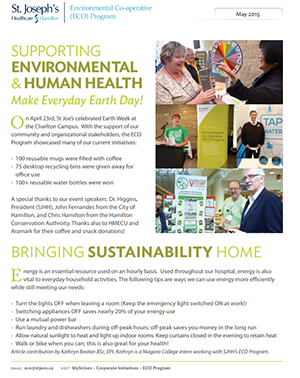Public visibility
Index
Another key characteristic of social movements in the context of knowledge uptake and sustainability is public visibility. In this section, you will learn about public visibility, and how to use it in order to raise awareness, build credibility and increase the numbers of those engaged in the change initiative.

What is this element?
Public presence or visibility is a key characteristic of social movements. Change agents use communication platforms – both traditional and digital – to assert the existence of the movement and build collective identity (Bujalances Hoyos et al., 2020; del Castillo et al., 2016; Grinspun, 2015a). When applied to knowledge uptake and sustainability, public presence draws attention to a social movement and encourages others to see themselves as active partners in the change and not solely as observers or consumers of information (Bujalance Hoyos et al., 2020; Davey, 2009). Social media in all of its forms is a potent amplifier of social movements (Grinspun, 2021).
Public visibility of the change initiative is expressed through individual and collective action in various ways, including the use of photos, quotes, logos, reports, and spoken or written narratives. They are used strategically to advance the goals of the social movement (Bajnok, et al., 2018b; Bujalances Hoyos et al., 2020; del Castillo et al., 2016; Serna Restrepo et al., 2018).
Using communication channels, including social media and websites, is central to knowledge mobilization – the uptake and sustainability of knowledge. Platforms such as Twitter, Facebook, Instagram, Periscope, Wiki and YouTube are used as robust mediums in modern implementation science (Bujalance Hoyos et al., 2020; Grinspun, 2015a; Grinspun et al., 2018; Serna Restrepo et al., 2018).
Public visibility of mobilized individual and collective action is:
- A strategy to raise awareness of the urgent need for action for a shared concern or strongly desired change. It can be used to promote the vision and goals of the social movement. It can also show the level of support and how others can get involved (Bujalances Hoyos et al., 2020; Davey, 2009; del Castillo et al., 2016).
- A means of sustaining the social movement. Social movements require ongoing support and the continued engagement of individuals. Public visibility keeps change agents and others updated on the activities of change initiatives (Davey, 2009; del Castillo et al., 2016; Grinspun, 2018).
- A tool to disseminate information to stakeholders, especially through digital platforms. Web-based technology allows for quick connection and communication of ideas to a broad audience. It also helps support collaborations between groups, especially those who are at a distance or who don’t work together in-person (Embry and Grossman, 2006; Grinspun and Bajnok, 2018).
Why is this element important?
- Public visibility raises awareness of and draws attention to the social movement (Lippman et al., 2013; Serna Restrepo et al., 2018).
- It showcases the individual and collective action activities that are happening, which in turn can trigger or expand the engagement of change agents and others (Bujalance Hoyos et al., 2020; Lippman et al., 2013).
- It can accelerate change by using social media platforms strategically to frame or position issues. Visibility also helps apply pressure for change and commands responses by others (del Castillo et al., 2016; Grinspun et al., 2018).
- Public visibility supports the credibility and momentum of a social movement, by providing examples of ongoing activity and highlighting the people and organizations actively engaged in the change (Bujalance Hoyos et al., 2020; del Castillo et al., 2016; Grinspun, 2011).
Accelerate Your Success: The Knowledge-to-Action Framework’s “Sustain knowledge use” action cycle phase includes strategies for how change teams can take action to sustain knowledge use, including developing an awareness of factors that can help or hinder. For change teams, having as many strategies to promote sustained change can help extend the social movement.
Considerations for getting started
Use photos and video
Use existing communications platforms
Use social media
Use framing
Implementation tools
Download our guide on using social media to enhance your social movement.
Case studies
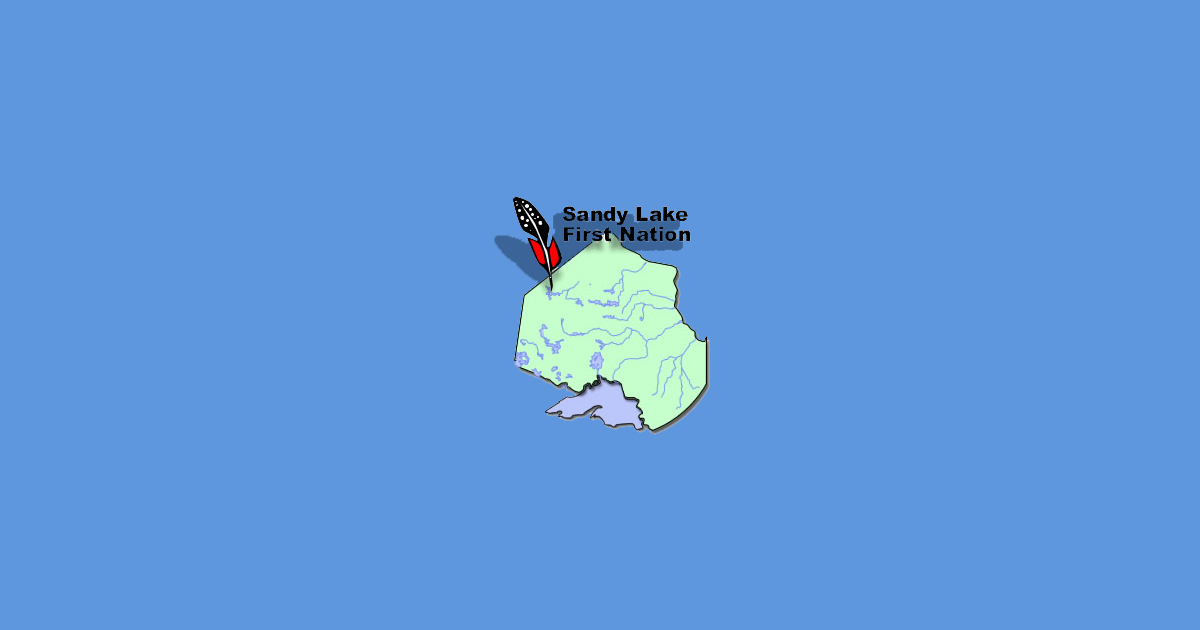
Building Public Visibility and Promoting Best Practices at Sandy Lake First Nation Authority
Sandy Lake Health Authority is a designate, Indigenous-focused Best Practice Spotlight Organization® (BPSO®) that manages health programs in Sandy Lake First Nation. Sandy Lake is a fly-in remote First Nation community in Northwestern Ontario. The community is located 600 km northwest of Thunder Bay, Ontario and 450 km northeast of Winnipeg, Manitoba (Sandy Lake First Nation, 2023).
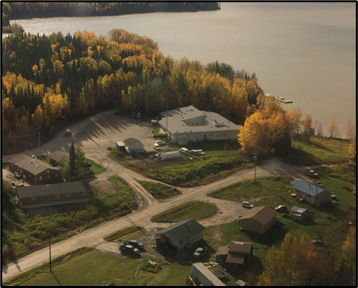
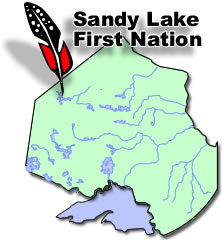
Sandy Lake First Nation Logo and nursing station [Shared with permission by Sandy Lake First Nation Health Authority]
Sandy Lake Health Authority has been implementing various best practice guidelines (BPG) from the Registered Nurses’ Association of Ontario (RNAO) since the beginning of its designation in 2021. These implemented BPGs have included: Assessment and Interventions for Perinatal Depression, Person- and Family-Centred Care, and Promoting Smoking Reduction and Cessation with Indigenous Peoples of Reproductive Age and their Communities.
The change team at Sandy Lake has been building public visibility and promoting best practices within its community by:
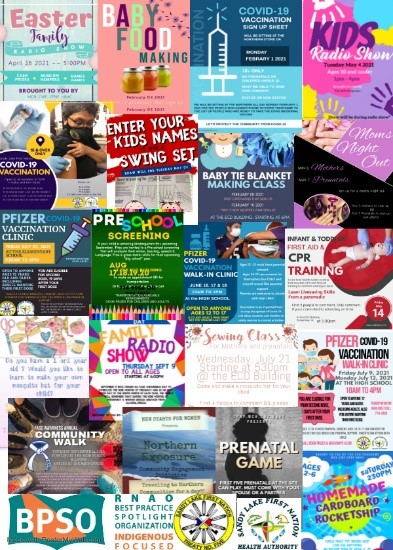
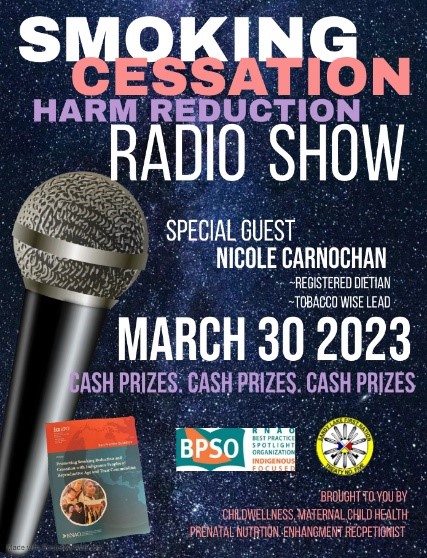
Posters created by the Sandy Lake team to promote events and build public visibility of BPSO; [Shared with permission by Sandy Lake First Nation Health Authority]
- promoting BPSO and best practice initiatives such on the local community radio show, announcements on internal media page, word-of mouth, and on-going conversations with health care providers,
- holding several events (e.g., mental health support for prenatal clients, health fairs) to support community wellness and engagement as allowed by pandemic restrictions,
- creating eye-catching posters to promote the events,
- using a closed Facebook page and messenger to communicate with prenatal clients, and
- displaying BPSO logo on Facebook, posters and other materials.
As a result of their collective action, Sandy Lake First Nation Authority has been able to build public visibility, meaning and awareness of their best practice initiatives within their community and region. As an inaugural member of the Indigenous-focused BPSO program, Sandy Lake First Nation has also leveraged provincial and international networks to share their community approaches to promoting prenatal health and wellness with others.
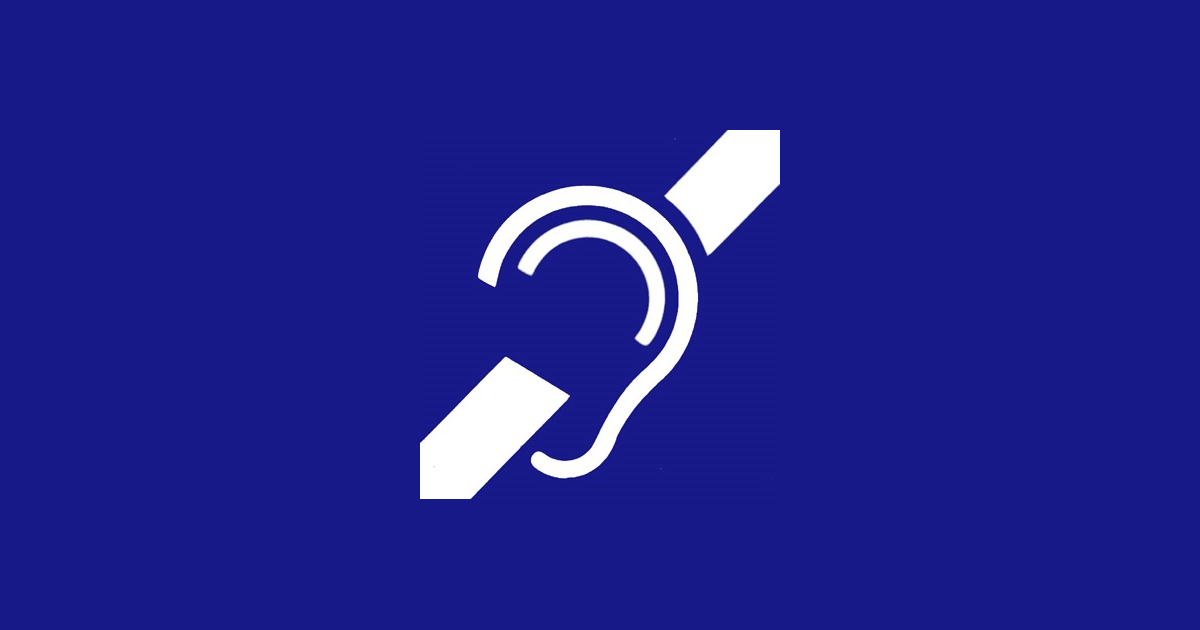
Increasing visibility to advance the rights of Deaf children
A community coalition in Los Angeles, California took collective action to advocate for the rights of Deaf children in accessing child abuse prevention and treatment services. The coalition took multiple steps to increase visibility, spread awareness and gain support. Some examples:
- one of the member organizations wrote an article published in a magazine for the Deaf community advocating for the protection of Deaf children.
- A presentation by coalition members was made at a local synagogue that included members of the Deaf community.
- A local social event included a focus on the collective actions of the coalition and how attendees could financially support their efforts.
These activities drew further attention to the collective action being taken and the urgency for change (Embry and Grossman, 2006).
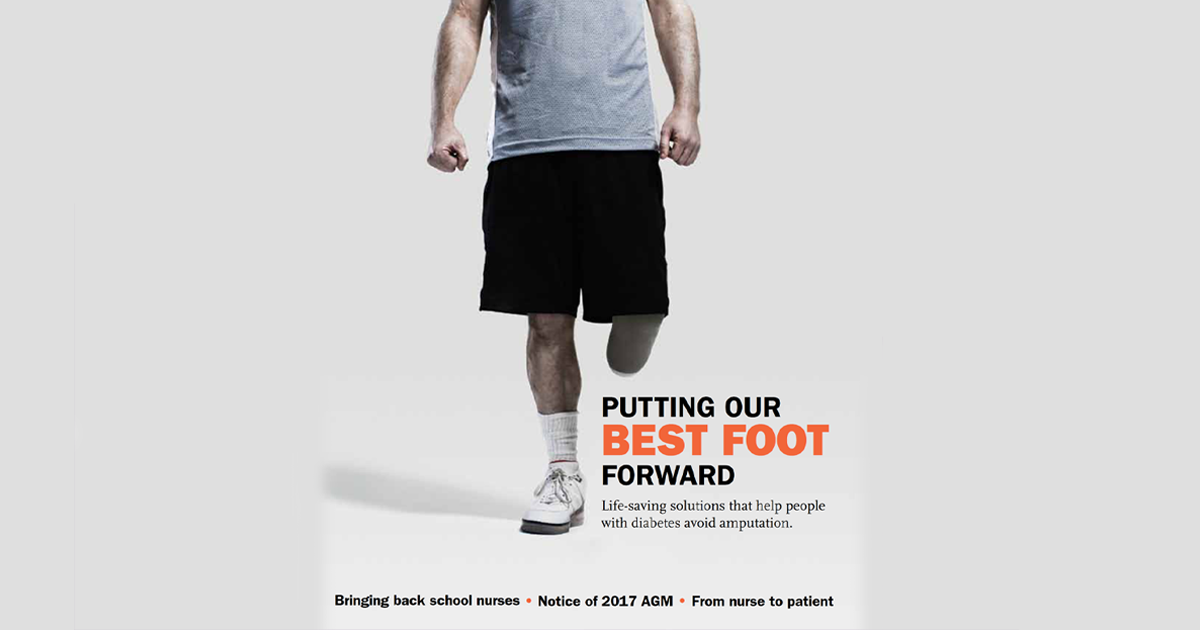
Using communication platforms to mobilize change for persons with diabetic foot ulcers
In 2014, RNAO, Wound Care Canada, and other supporters organized a coalition and advocated for diabetes-related foot ulcers care from the provincial government in Ontario, Canada. The coalition used evidence, political pressure to demand an integrated system of care with universal access to improve health outcomes, including reduced ulcers and amputations and reduced costs for pressure-alleviating devices. Members of the coalition participated in many activities, including:
- attending and participating in stakeholder meetings
- writing a media release and lead article in RNJ
- meeting with members of provincial parliament (MPPs) at RNAO’s annual Queen’s Park Day (Grinspun et al., 2018a)
The result of these advocacy efforts and changes in health outcomes are also described in an RNAO Evidence Booster measuring the impact of offloading devices for people living with diabetes and foot ulcers (https://rnao.ca/bpg/resources/evidence-booster-assessment-and-management-foot-ulcers-people-diabetes).
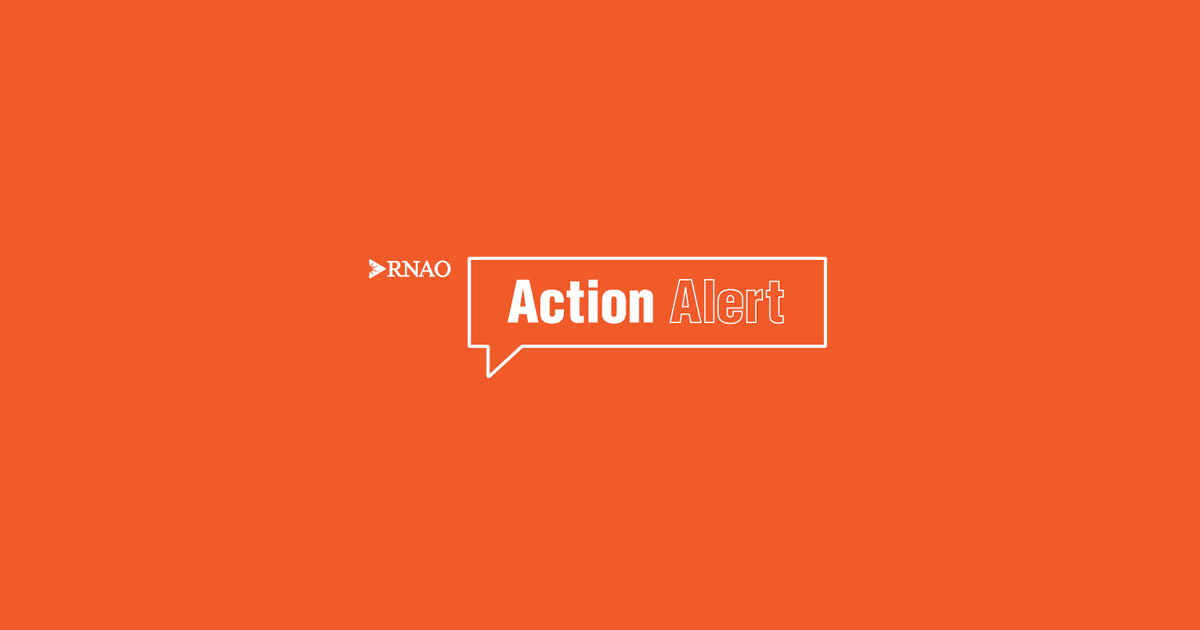
Using social media to increase public visibility and raise awareness
RNAO uses social media campaigns to increase public visibility and raise awareness of issues. One example: RNAO’s call on the Ontario government to mandate recommendations set out in its Nursing Home Basic Care Guarantee. The campaign incorporated the hashtags #LTC #BasicCareGuarantee and #4Hours4Seniors to raise awareness of the staffing crisis in long-term care (LTC) and to encourage the public, health professionals, the government, LTC residents and their families to mobilize change.
As the campaign evolved, so did the visuals and the messaging. The three examples below show the stages of the campaign as it gained attention and momentum – from “good” through “better” to “best.”
RNAO developed an Action Alert (AA) to mobilize collective action to advocate for nursing home residents. The link to the AA, the graphic, the messaging and the hashtag #4Hours4Seniors were all shared on social media to urge others to sign and share the AA. People were also encouraged to use the hashtag to contribute to the dialogue about the LTC crisis.
The social media campaign aimed to support the goal set out in the AA – encourage as many people as possible to add their signatures to urge action from key political leaders.
This is a good example of a social media campaign, incorporating a graphic, supportive messaging, a call-to-action (the link to the AA) and a specific hashtag.
In this example, RNAO staff members are holding signs identifying why #4Hours4Seniors matters to them. The hashtag is used consistently and individual reasons for supporting the cause are illustrated.
This is a better example of a social media campaign – it brings a personal touch to the campaign and allows supporters to share why they want to join the conversation. It also brought life to the hashtag and to the purpose of the campaign.
Image
In this example, RNAO collaborated with F.J. Davey Home in Sudbury, Ontario, Canada to encourage residents to share their “why” for wanting #4Hours4Seniors. Building on the same idea as the “better” example given above, this example truly brought a face to the reason for the campaign in the first place. RNAO shared the photos and quotes from residents on its social media feeds (Instagram, Facebook and Twitter) alongside the hashtag #4Hours4Seniors.
For example, M. Doan, a senior living at the F.J. Davey Home, shared: “I am a very independent person, but my wife on the other hand isn’t and she means the world to me. With four hours of care, it doesn’t need to be rushed. And who wouldn’t want to see her beautiful smile for four hours!" (https://twitter.com/RNAO/status/1336781022780928000).
The photos are powerful as they show a real-life married couple living in a LTC home – two of the many residents RNAO advocated for through its AA and its ongoing call for a Nursing Home Basic Care Guarantee. The posters held by the couple express their personal values of dignity and comfort.
Tell us how you and your change team have used public visibility at #LeadingChangeToolkit
Navigating common problems
Providing infrequent updates
- Momentum can be threatened in the absence of frequent updates on the social movement. Change agents and others may falsely conclude that the social movement has run out of energy, reached a plateau, or come to an end.
Continue to provide periodic updates on the social movement at meetings and through other communication channels including social media. The updates should ideally continue after the social movement has reached its goals – continuing to provide updates can help sustain the change and maintain engagement.
Using sites with low readership
- Social media sites or other communication channels that have low readership limit the potential for visibility and for attracting support.
Identify one or more sites to post and share updates. Highlight these sites so staff and others know where to find updates.
Lacking funds to support public visibility activities
- Insufficient funding or a lack of ongoing funding can reduce opportunities to support the visibility of collective action.
If little to no funding is available, opt for open access sources such as intranet or social media platforms.
Using confusing hashtags
- Using an unclear or ambiguous hashtag creates confusion about the focus and goals of the social movement.
- Using multiple hashtags can create confusion about the focus and priorities of the social movement.
Use one easy-to-understand hashtag consistently to support messaging, and to help centralize and coordinate individual and collective actions.
Using images that are less effective
- Examples of less effective use of images may include:
- collective action images that do not include thought leaders, influencers, or peer champions.
- a lack of imagery showing pivotal moments of individual and collective action such as images of a group or critical mass engaged in change.
- a mismatch between photos or other visuals and words used to describe the collective action.
- The use of generic stock images can also distract from the collective action and the specific goals of the social movement. In some cases, they may also reinforce stereotypes that undermine the values of the social movement.
- A tone of negativity and despair can result when problem-oriented photos and text are used and where there are no corresponding images or text regarding the goals or vision to address the shared concern or strong desire for change.
- Be ready at events to capture images.
- Take the opportunity to take images that include thought leaders and other formal and informal leaders.
- Use photos of real leaders.
- Use images and quotes from individuals engaged in collective action. Choose ones to promote the diversity of leaders.
- Be thoughtful when choosing images to ensure that they are powerful, uplifting and raise feelings of hope and hopefulness. These positive feelings can promote and inspire others to get involved.
SOURCES: FrameWorks, 2020; Grinspun et al., 2018a; Grinspun et al., 2018b; McConnell et al, 2018; Tremblay et al., 2018.
Check your progress
- Your colleagues and others are aware of the social movement and related activities.
- You are using platforms such as social media and informal networks to communicate key messages.
- You are looking at your social media metrics to determine the dissemination of the social movement through the number of shares.
- Your individual and collective action activities have a consistent public presence that supports the credibility of the social movement.
- You are using social media tools to promote engagement beyond your local context, if appropriate. This enables people who are not members of an organization to know about the work you are doing.
- You are seeking collaborations with other stakeholders, as appropriate, using communication channels that support the social movement.
- You are developing knowledge and skills on how to use social media effectively, including how to use framing to position an issue, and how to get involved and take action.
SOURCES: FrameWorks, 2020; Grinspun et al., 2018a; Grinspun et al., 2018b; Kennedy et al., 2019; Tremblay et al., 2018; Waring and Crompton, 2017.
Linking this element to other framework components
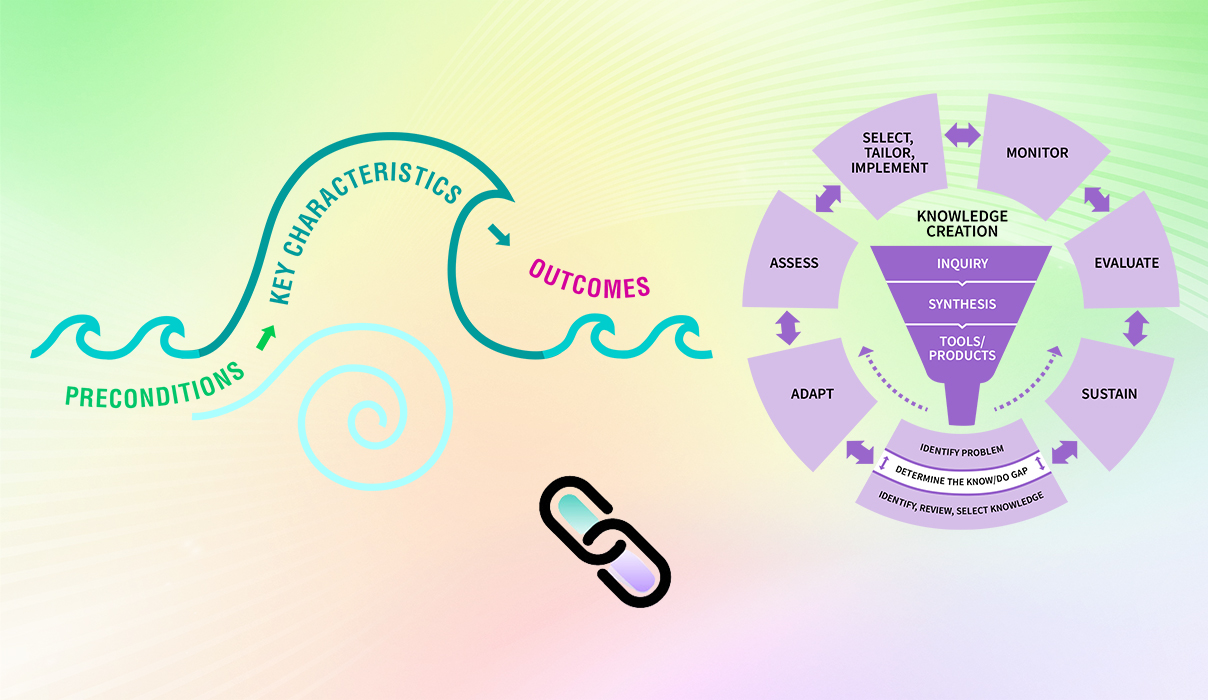
Linking this key characteristic to other elements of the Social Movement Action Framework:
Each of the elements of the Social Movement Action (SMA) Framework is dynamic and interrelated. For example, raises awareness of the individual and collective action being taken to address the shared concern or strong desire for change and an urgent need for action and receptivity for change. Framing and reframing are used to strategically position the individual and collective action and to evoke understanding and emotional responses to the social movement. It may be organized and supported by a core leadership structure. Public visibility captures in words or images the efforts of emerging leaders and their collective identity. Engaging networks extend the visibility of collective action.
Linking this key characteristic to the action cycle phases of the Knowledge-to-Action Framework:
You and your change team’s capacity in social movement actions may be enhanced and/or accelerated by the addition of some of the action cycle phases of the Knowledge-to-Action (KTA) Framework, as the two frameworks are complementary. In addition to the linking example described earlier in this section, there can be many other points of connection between the two frameworks. Below are three more examples for your consideration:
- Adapt knowledge to local context: As the social movement evolves, mobilization visibly shifts the social movement to public spaces. Staff and others may or may not be receptive to the public visibility of the social movement, depending on the context in which these individuals reside, and their own identities and roles. You and your change team can consider assessing the local context and staff and others' support before making the social movement publicly visible to strengthen the plan you have to engage the public. Securing an effective communications plan for raising public awareness through framing or positioning the issue can help you effectively deliver your need for change.
- Evaluate outcomes: Public visibility may be leveraged to communicate how your social movement achieved the desired outcome. There may be a responsibility to provide updates to the public and summarize whether the outcomes were achieved by the social movement. This adds credibility to your social movement. You and your change team can also evaluate the outcomes of public awareness – did the public visibility help you and your team gain more traction and momentum? Evaluating the outcomes of public visibility can be a powerful way to strategically plan for future opportunities to engage the public.
- Sustain knowledge use: Combined, public visibility and individual and collective action support the sustainability of the social movement. Specifically, the visible presence of the individual and collective action in public domains propels the awareness, urgency for change, and support of the social movement. These are all beneficial in sustaining the change because it keeps the urgency of the change at the forefront of people’s minds.
For more discussion about the dynamic links between the elements of the SMA Framework and the KTA Framework, see the section "Two complementary frameworks".
